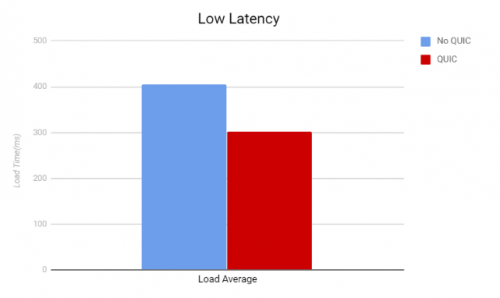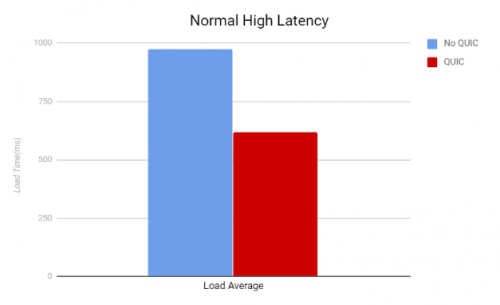Table of Contents
How QUIC makes the web quicker
Why QUIC?
The QUIC function is running on top of UDP, which improves http transmission efficiency. One of the ways it does so is by avoiding TCP head-of-line blocking. With TCP, packets need to arrive in the correct order. If a packet is lost on its way to the server, it needs to be retransmitted, and the TCP connection needs to wait on that TCP packet before it can continue to send other packets. UDP, on the other hand, is not dependent on the order packets are received. While it's still possible for packets to get lost during transmission, they will only impact individual resources, e.g. the site's CSS file, and will not block the entire connection.
More and more people use mobile devices and they constantly switch between WiFi and LTE. Under TCP, when the IP changes, a new connection needs to be created, which could cost up to 200ms: 50ms*(handshake*3+tls*1)=200ms. QUIC has implemented its own identifier for unique connections called the Connection UUID. It's possible to switch between WiFi and LTE and still keep your connection's UUID. Therefore, renegotiating the connection is no longer needed, and your previous connection is still valid.
QUIC is supported in LiteSpeed Web Server versions 5.2 and up.
Let’s do a simple experiment
Server Settings:
LiteSpeed Web Server: QUIC default should be set to ON. A non-self-signed certificate is required.
- For more detailed requirements, please see QUIC Requirements.
- If you are looking for different QUIC level settings, see Levels Settings
- If you are using control panels, see QUIC Setup Method
Client browser QUIC Supports and Settings:
- For Chrome, set
chrome://flags/#enable-quictoEnabled/Disabled - For Opera, set
opera://flags/#enable-QUICtoEnabled/Disabled
Verify QUIC is working
Install an indicator to verify QUIC is functioning.
- See QUIC Verify .
- Or you can use wireshark with filter
quic:- When QUIC disabled or browser not support, you can not capture any packets
Measure the latency
Load page testing steps
Testing page speed with QUIC Disabled (TCP)
When you open our blog site, will see an ESTABLISHED connection though the following command:
netstat -a -n -p tcp -o | findstr ESTABLISHED | findstr your_server_IP
- Or just restart all browsers every time
Testing page speed with QUIC Enabled (UDP)
- Make sure QUIC is working, as described above.
- Open browser dev tool through
Ctrl + Shift + i, make sureDisable cacheenabled - Record Load time
Results
Scenario 1: Low Latency(<1ms), QUIC reduces Load time by almost 25%.

Scenario 2: Normal high Latency(80ms) When latency is normal, QUIC reduces Load time by almost 37%.

Test Environment
- Server under test: CentOS7 + LiteSpeed Enterprise 5.2 + LSCache + WordPress
- Server Location: Scenario1-LAN, Scenario2-Cloud
- Server URL: https://blog.litespeedtech.com/
- Client Device: Win10 NB, Chrome v60.0.3112
- Client Hardware: Intel Core i7-4500 CPU, 8 GB RAM
The higher the latency, the better QUIC performs. Now, why don’t you try it? Use your browser's development tools to check our blog's loading time (or start your experiment on your own site). You will see that QUIC is quicker.
We welcome your feedback on our forum.




